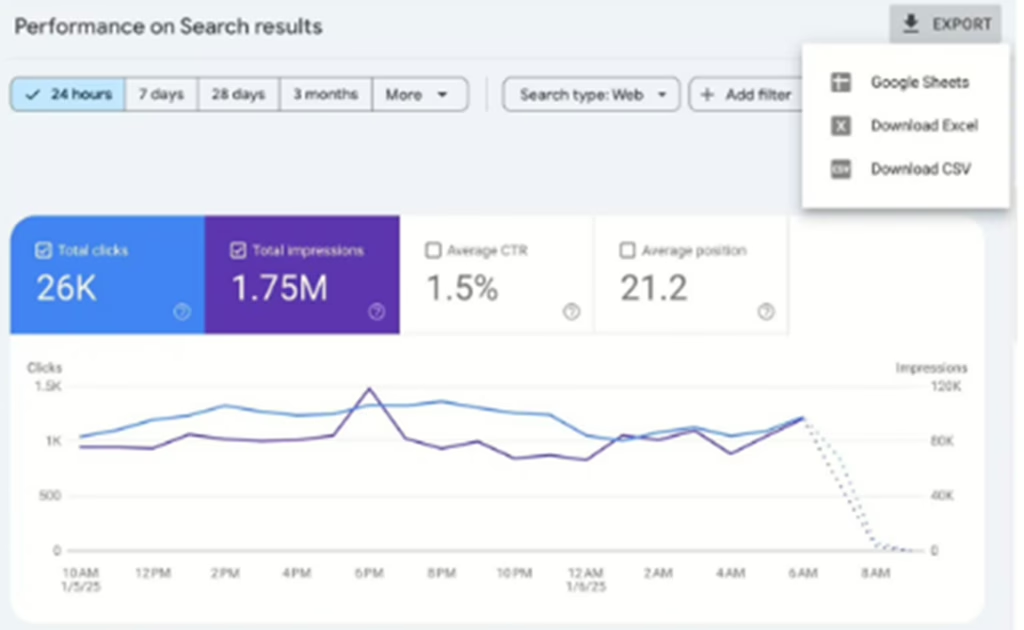
Extended eCommerce Website Launch Checklist for 2026 - Part 2
Build an Online Store That Converts, Scales, and Strengthens Your Brand in 2026
Your ecommerce platform is more than just a tool. It’s the backbone of your online business. The right foundation gives you control, scalability, and creative freedom to grow on your terms. Let’s explore why choosing wisely from the start can mean the difference between building a business that thrives and one that’s limited by its platform.
Part 2 builds directly on insights from Part 1. For a comprehensive understanding, start with the earlier post published two days ago.

9. Optimize for Search Engine Visibility (SEO)
SEO is the foundation of sustainable, long-term eCommerce growth. While paid advertising provides immediate traffic, SEO delivers compounding returns by driving free, qualified organic traffic to your store.
Technical SEO Foundations
Site Architecture
- Create logical URL structure (domain.com/category/product)
- Keep URLs short, descriptive, and keyword-rich
- Implement proper breadcrumb navigation
- Create XML sitemap and submit to Google Search Console
- Set up robots.txt file correctly
- Fix broken links and redirect chains
- Implement canonical tags to prevent duplicate content
Mobile Optimization
- Ensure responsive design across all devices
- Pass Google's Mobile-Friendly Test
- Optimize for Core Web Vitals (LCP, FID, CLS)
- Test mobile usability in Google Search Console
- Ensure tap targets are appropriately sized
Structured Data (Schema Markup)
Structured data helps search engines understand your content and can earn rich snippets in search results.
Essential Schema Types:
- Product schema (name, price, availability, reviews)
- Offer schema (pricing and promotional info)
- Review/rating schema (aggregate ratings)
- Breadcrumb schema (navigation path)
- Organization schema (business information)
- FAQ schema (for product questions)
On-Page SEO
Homepage Optimization
- Compelling, keyword-rich title tag (under 60 characters)
- Meta description that encourages clicks (under 160 characters)
- H1 tag with primary keyword
- Clear value proposition and brand messaging
- Internal links to key category and product pages
- Fast-loading hero images with descriptive alt text
Category Page Optimization
- Unique, descriptive category descriptions (200+ words)
- Target mid-tail keywords (e.g., "women's running shoes")
- Optimized title tags and meta descriptions per category
- Proper heading hierarchy (H1 for category name, H2 for subcategories)
- Faceted navigation that's search-engine friendly
- Pagination implemented correctly (rel="next" and rel="prev")

Product Page SEO
Product pages are your primary conversion and ranking opportunities.
- Unique product titles: Include brand, product name, key features
- Compelling meta descriptions: Benefits, features, call-to-action
- Detailed product descriptions: Minimum 300-500 words, naturally incorporating keywords
- High-quality images: Compressed, with descriptive file names and alt text
- Customer reviews: Fresh, user-generated content signals relevance
- Structured data markup: Product schema for rich snippets
- Related products: Internal linking to similar items
- Unique content: Never use manufacturer descriptions verbatim
Content SEO Strategy
Keyword Research
- Identify high-volume, relevant keywords in your niche
- Target long-tail keywords with buying intent (e.g., "best waterproof hiking boots for women")
- Analyze competitor rankings and content gaps
- Use tools like Google Keyword Planner, Ahrefs, SEMrush, or Ubersuggest
- Focus on commercial and transactional keywords
Blog Content
- Create comprehensive buying guides
- Write product comparison articles
- Answer common customer questions
- Target informational keywords that lead to purchases
- Update content regularly to maintain freshness
- Build topical authority in your niche
Link Building Strategy
Internal Linking
- Link from blog posts to relevant product and category pages
- Create hub pages that link to related content
- Use descriptive anchor text
- Ensure every page is reachable within 3 clicks from homepage
- Fix orphaned pages (pages with no internal links)
External Linking
- Reach out for product reviews from bloggers and publications
- Create shareable content (guides, infographics, research)
- Build relationships with industry influencers
- Submit products to relevant directories
- Guest posting on relevant industry blogs
- Digital PR for brand mentions and links
- Partner with complementary brands
Local SEO (If Applicable)
For businesses with physical locations or local service areas:
- Create and optimize Google Business Profile
- Ensure NAP (Name, Address, Phone) consistency across web
- Collect and respond to Google reviews
- Add local business schema markup
- Create location-specific pages if serving multiple areas
- Build citations in local directories
Ongoing SEO Monitoring
Google Search Console Setup
- Verify site ownership
- Submit XML sitemap
- Monitor indexing status and coverage issues
- Track search queries and impressions
- Identify and fix crawl errors
- Monitor Core Web Vitals
- Check mobile usability issues
Regular SEO Audits
The search landscape constantly evolves. Regular audits help you maintain and improve rankings.
- Verify site ownership
- Submit XML sitemap
- Monitor indexing status and coverage issues
- Track search queries and impressions
- Identify and fix crawl errors
- Monitor Core Web Vitals
- Check mobile usability issues
Monthly Tasks:
- Review organic traffic trends
- Monitor keyword rankings
- Check for technical errors
- Review new backlinks
- Update outdated content
Quarterly Tasks:
- Comprehensive site audit
- Competitor analysis
- Content gap analysis
- Backlink profile review
- Site speed optimization
At Muumba Web Digital, we understand that SEO is not a one-time task. It’s an ongoing strategic process. Regular SEO audits help identify technical issues, content opportunities, and optimization strategies that keep your eCommerce store competitive.
Read our comprehensive guide: The Importance of Regular SEO Audits for Businesses →
Action Items:
- Complete keyword research for primary product categories
- Optimize all product titles, descriptions, and meta tags
- Implement structured data markup site-wide
- Create and submit XML sitemap
- Set up Google Search Console and Bing Webmaster Tools
- Optimize images with descriptive file names and alt text
- Build internal linking structure
- Create content calendar for SEO-focused blog posts
- Conduct initial backlink analysis
- Set up rank tracking for target keywords
- Schedule quarterly SEO audits
10. Prioritize Security: Protect Your Business and Customers

eCommerce security isn’t optional. It’s fundamental. A single security breach can destroy customer trust, result in hefty fines, cause revenue loss, and damage your brand reputation permanently. In 2026, cyber threats are more sophisticated than ever, making robust security measures essential.
SSL Certificate (HTTPS)
Why SSL is Non-Negotiable:
- Encrypts data transmitted between browser and server
- Required for payment processing and PCI compliance
- Google ranking factor (HTTPS sites rank higher)
- Browsers display warnings for non-HTTPS sites
- Builds customer trust (padlock icon in address bar)
Action Items:
- Install valid SSL certificate (not self-signed)
- Force HTTPS site-wide (redirect all HTTP to HTTPS)
- Verify SSL certificate is properly configured
- Test SSL implementation with SSL Labs
- Set up automatic SSL renewal
- Implement HSTS (HTTP Strict Transport Security)
At Muumba Web Digital, free SSL certificates are included with all hosting plans, with automatic installation and renewal so you never have to worry about expiration.
Web Application Firewall (WAF)
A WAF filters malicious traffic before it reaches your site, protecting against:
- SQL injection attacks
- Cross-site scripting (XSS)
- DDoS attacks
- Brute force login attempts
- Known vulnerabilities and exploits
- Bot traffic and scraping
Action Items:
- Enable WAF on your hosting or through CloudFlare
- Configure security rules appropriate for eCommerce
- Set up rate limiting to prevent abuse
- Monitor firewall logs for attack attempts
- Regularly update WAF rules and signatures
Malware & Threat Scanning
- 24/7 automated security scanning for malware and threats
- Real-time threat detection and alerting
- Proactive monitoring to catch issues before they impact customers
- Security incident response from experienced professionals
- Vulnerability assessments to identify weaknesses
Action Items:
- Enable automated daily malware scanning
- Set up security alerts for suspicious activity
- Scan all plugins and themes for vulnerabilities
- Remove unused plugins, themes, and files
- Monitor file integrity for unauthorized changes
Strong Authentication & Access Control
Password Security Weak passwords are the #1 cause of compromised accounts. Password Policy Requirements:
- Minimum 12 characters
- Combination of uppercase, lowercase, numbers, symbols
- No dictionary words or common patterns
- Unique passwords for each account
- Regular password changes (every 90 days)
- Use password manager (LastPass, 1Password, Bitwarden)
Two-Factor Authentication (2FA)
- Enable 2FA for all admin accounts
- Require 2FA for any account with access to customer data
- Use authenticator apps (Google Authenticator, Authy) over SMS
- Provide backup codes in case of device loss
- Consider offering 2FA for customer accounts
User Access Management
- Implement role-based access control (RBAC)
- Grant minimum necessary permissions
- Remove access immediately when employees leave
- Regularly audit user accounts and permissions
- Monitor admin login activity
- Limit number of admin accounts
Payment Security & PCI Compliance
If you process credit card payments, PCI DSS (Payment Card Industry Data Security Standard) compliance is mandatory.
PCI Compliance Requirements:
- Use PCI-compliant payment gateways
- Never store full credit card numbers
- Never store CVV codes
- Encrypt cardholder data transmission
- Maintain secure network infrastructure
- Regularly test security systems
- Implement access controls for cardholder data
- Complete annual PCI compliance validation
Best Practices::
- Use payment gateways that handle PCI compliance (Stripe, PayPal)
- Never build custom payment processing (use trusted providers)
- Tokenize payment information for recurring billing
- Implement fraud detection and scoring
- Monitor transactions for suspicious patterns
- Regularly test security systems
- Implement access controls for cardholder data
- Complete annual PCI compliance validation
Backup & Disaster Recovery
Backups are your insurance policy against data loss, ransomware, hosting failures, and human error.
Backup Strategy:
Frequency:
- Daily automated backups minimum
- Pre-update backups before any major changes
- Real-time replication for mission-critical data
Backup Scope:
- Complete website files and code
- Database (products, orders, customers)
- Media library and uploads
- Configuration files
- Email accounts and data
Storage Location:
- Off-site backup storage (not on same server)
- Multiple geographic locations
- Encrypted backup storage
- Version control (retain multiple backup versions)
Testing & Recovery:
- Test backup restoration quarterly
- Document recovery procedures
- Measure Recovery Time Objective (RTO)
- Measure Recovery Point Objective (RPO)
- Train team on restoration process
At Muumba Web Digital, we provide:
- Automated daily backups of your entire site
- 1-Click Restore functionality for quick recovery
- Off-site backup storage for maximum protection
- Retention of multiple backup versions
- Expert support for backup restoration when needed
Action Items:
- Verify automated backups are running daily
- Test backup restoration process
- Document recovery procedures
- Store backup credentials securely
- Set up backup success/failure notifications
Additional Security Measures
Software Updates Outdated software is the #1 vulnerability exploited by attackers.
- Enable automatic updates for CMS core (WordPress, Shopify, etc.)
- Update plugins and extensions immediately when available
- Update themes regularly
- Keep PHP and server software current
- Remove and delete unused plugins completely
- Subscribe to security bulletins for your platform
Spam & Bot Protection
- Implement CAPTCHA or reCAPTCHA on forms
- Use honeypot fields to catch bots
- Enable comment moderation and spam filters
- Block suspicious IP addresses and user agents
- Implement rate limiting on forms and checkout
- Use anti-fraud tools for payment processing
Security Headers Implement security headers to protect against common attacks:
- Content-Security-Policy (CSP)
- X-Frame-Options (clickjacking protection)
- X-Content-Type-Options
- Referrer-Policy
- Permissions-Policy
Security Monitoring & Incident Response
- Set up security event logging
- Monitor for suspicious login attempts
- Track failed payment attempts
- Alert on unusual traffic patterns
- Create incident response plan
- Document security procedures
- Conduct security training for staff
Action Items:
- Install valid SSL certificate and force HTTPS site-wide
- Enable web application firewall
- Activate 24/7 malware scanning
- Implement strong password policy
- Enable 2FA for all admin accounts
- Verify PCI compliance for payment processing
- Confirm automated daily backups are active
- Test backup restoration process
- Update all software to latest versions
- Enable spam protection on all forms
- Review user access and remove unnecessary accounts
- Document security procedures and incident response planounts
- Schedule monthly security reviews
Learn more about Muumba Web Digital’s comprehensive security solutions →
11. Ensure Legal Compliance: Protect Your Business
Legal compliance protects your business from lawsuits, fines, and regulatory penalties. In the complex eCommerce landscape of 2026, having proper legal documentation isn’t just best practice. It’s essential.
Terms of Service
Your Terms and Conditions establish the legal agreement between your business and customers. Strong terms protect you from disputes, chargebacks, and liability.
Terms and Conditions
Terms of Service
Your Terms and Conditions establish the legal agreement between your business and customers. Strong terms protect you from disputes, chargebacks, and liability.
Essential Elements:
Acceptance of Terms
- Clearly state that using your site constitutes acceptance
- Require checkbox acceptance at checkout
- Date terms and note when last updated
Products & Services
- Describe what you sell and service limitations
- Clarify that product photos may vary from actual items
- State accuracy disclaimers for product information
- Address pricing errors and your right to cancel
Ordering & Payment
- Explain order acceptance and processing procedures
- Reserve right to refuse or cancel orders
- Clarify when payment is charged
- Address declined payments
- Explain currency and payment methods
Shipping & Delivery
- Provide shipping timeframes and cost structures
- Clarify delivery responsibility and risk of loss
- Address international shipping and customs
- Explain delayed or failed delivery procedures
Returns, Refunds & Exchanges
- Detail your return policy clearly
- Specify timeframes, conditions, and procedures
- Clarify refund processing times and methods
- Address restocking fees or non-returnable items
Limitation of Liability
- Limit your liability for indirect or consequential damages
- Cap total liability to purchase price
- Disclaim warranties to extent permitted by law
- Address product defects and safety issues
Intellectual Property
- Assert ownership of site content, logos, and trademarks
- Prohibit unauthorized use of your intellectual property
- Address user-generated content ownership
Dispute Resolution
- Specify governing law and jurisdiction
- Consider arbitration clauses to avoid costly litigation
- Address class action waiver (if applicable)
Privacy Policy
A comprehensive privacy policy is legally required in most jurisdictions and builds customer trust by explaining how you collect, use, and protect personal data.
Required Privacy Policy Elements:
Data Collection
- What personal information you collect (name, email, address, payment info)
- How you collect it (forms, cookies, analytics, third-party tools)
- Why you collect it (order processing, marketing, analytics)
Data Usage
- How you use customer information
- Whether you share data with third parties
- Marketing communications and opt-out options
- Analytics and tracking purposes
Data Protection
- Security measures to protect customer data
- Encryption and secure storage practices
- Employee access controls
- Breach notification procedures
Customer Rights
- Right to access personal data
- Right to correct inaccurate information
- Right to delete data (right to be forgotten)
- Right to opt-out of marketing
- Right to data portability
Cookies & Tracking
- Types of cookies used (essential, analytics, marketing)
- Third-party cookies and tracking pixels
- How to disable cookies
- Impact of disabling cookies on site functionality
Third-Party Services
- Payment processors
- Shipping carriers
- Email marketing platforms
- Analytics tools
- Social media integrations
GDPR Compliance (European Customers)
If you serve customers in the European Union, GDPR compliance is mandatory. Violations can result in fines up to €20 million or 4% of annual revenue.
GDPR Requirements:
- Payment processors
- Shipping carriers
- Email marketing platforms
- Analytics tools
- Social media integrations
Lawful Basis for Processing
- Obtain explicit consent for data processing
- Provide clear, accessible privacy information
- Use plain language (no legal jargon)
- Separate consent for different purposes
Consent Management
- Implement cookie consent banners
- Provide granular consent options (marketing, analytics, etc.)
- Make opt-out as easy as opt-in
- Record and document consent
- Allow consent withdrawal at any time
Data Subject Rights
- Right of access (provide data upon request)
- Right to rectification (correct inaccurate data)
- Right to erasure (delete data)
- Right to data portability (export data in machine-readable format)
- Right to object to processing
- Respond to requests within 30 days
Data Protection Officer (DPO)
- Appoint DPO if processing large amounts of sensitive data
- Provide DPO contact information in privacy policy
Data Breach Notification
- Report breaches to supervisory authority within 72 hours
- Notify affected individuals if high risk to rights and freedoms
CCPA Compliance (California Customers)
The California Consumer Privacy Act applies if you serve California residents and meet certain thresholds.
- Report breaches to supervisory authority within 72 hours
- Notify affected individuals if high risk to rights and freedoms
CCPA Requirements:
- Right to know what personal information is collected
- Right to know if personal information is sold or shared
- Right to opt-out of sale of personal information
- Right to deletion of personal information
- Right to non-discrimination for exercising privacy rights
- Prominent "Do Not Sell My Personal Information" link
Additional Compliance Considerations
ADA/WCAG Accessibility
- Ensure site is accessible to users with disabilities
- Follow WCAG 2.1 Level AA guidelines minimum
- Provide alt text for images
- Ensure keyboard navigation
- Use sufficient color contrast
- Provide text alternatives for audio/video
CAN-SPAM Act (Email Marketing)
- Include physical business address in emails
- Provide clear unsubscribe mechanism
- Honor opt-out requests within 10 days
- Use accurate "From" names and subject lines
- Identify messages as advertisements
Children's Online Privacy Protection Act (COPPA)
- Don't knowingly collect data from children under 13
- Obtain verifiable parental consent if you target children
- Clearly disclose data collection practices
Tax Compliance
- Collect sales tax in jurisdictions where required
- Register for tax permits in nexus states
- File and remit taxes on schedule
- Issue proper invoices and receipts
International Regulations
- Canada's PIPEDA (Personal Information Protection)
- Australia's Privacy Act
- Brazil's LGPD (General Data Protection Law)
- Country-specific consumer protection laws
Action Items:
- Draft comprehensive Terms and Conditions (or hire attorney)
- Create detailed Privacy Policy covering all requirements
- Implement cookie consent banner for EU visitors
- Add "Do Not Sell" link for California compliance
- Include all required disclosures on checkout page
- Link to legal pages in footer (visible on every page)
- Require terms acceptance checkbox at checkout
- Set up processes for handling data requests
- Document your data processing activities
- Review accessibility compliance
- Ensure email marketing complies with CAN-SPAM
- Consult with attorney for jurisdiction-specific requirements
- Review and update legal documents annually
Resources:
- Termly, Iubenda, or TermsFeed for policy generators (review with attorney)
- Consult with eCommerce attorney for custom terms
- Use compliance plugins (GDPR Cookie Consent, etc.)
- Country-specific consumer protection laws
12. Conduct Thorough User Testing
Even the most carefully built eCommerce site will have issues that only real users can discover. Comprehensive testing before launch prevents costly mistakes, reduces support tickets, and ensures a smooth customer experience from day one.
Types of Testing to Conduct
Functional Testing
Test every feature, button, form, and interaction to ensure everything works as intended.
Core Functionality Checklist:
- Navigation menus and links (all pages reachable)
- Search functionality (returns accurate results)
- Product filtering and sorting
- Add to cart from all product pages
- Cart updates (quantity changes, item removal)
- Coupon/discount code application
- Shipping calculator
- Checkout flow (guest and account checkout)
- Payment processing (test multiple payment methods)
- Order confirmation emails
- Account creation and login
- Password reset functionality
- Customer account dashboard
- Order history and tracking
- All forms (contact, newsletter, returns)
- Live chat or support widgets
- Social sharing buttons
Cross-Browser Testing
Your site must work flawlessly across all major browsers.
Test on:
- Google Chrome (70%+ of traffic)
- Safari (especially on Mac and iOS)
- Firefox
- Microsoft Edge
- Samsung Internet (popular on Android)
What to Check:
- Layout and design consistency
- Interactive elements function correctly
- Checkout process completes
- Payment processing works
- Forms submit properly
- JavaScript functions execute
Cross-Device Testing
With mobile accounting for 60%+ of eCommerce traffic, mobile testing is non-negotiable. Test on Multiple Devices:
- iPhone (multiple models and iOS versions)
- Android phones (Samsung, Google Pixel, etc.)
- iPad and Android tablets
- Desktop computers (Mac and PC)
- Various screen sizes and resolutions
Mobile-Specific Checks:
- Touch targets are large enough (minimum 44x44 pixels)
- Forms are easy to complete on small screens
- Checkout works smoothly on mobile
- Images scale appropriately
- Text is readable without zooming
- Navigation is accessible and intuitive
- Page load speed on mobile networks (3G/4G)
Usability Testing
Observe real people using your site to identify friction points, confusion, and areas for improvement.
How to Conduct Usability Tests:
How to Conduct Usability Tests:
Recruit Test Participants
- Aim for 5-10 testers representing your target audience
- Include mix of tech-savvy and less technical users
- Recruit people unfamiliar with your site
Create Test Scenarios
- "Find and purchase a [specific product]"
- "Sign up for the newsletter"
- "Find information about shipping costs to [location]"
- "Initiate a product return"
- "Update your account information"
Observe and Document
- Watch users navigate without offering help
- Note where they get confused or stuck
- Ask them to think aloud as they browse
- Record sessions (with permission) for later review
- Take detailed notes on pain points
Questions to Ask:
- What was confusing or frustrating?
- What would you change?
- Was anything missing that you expected to find?
- Did you feel confident completing the purchase?
- Would you recommend this site to others?
Performance Testing
Test your site under realistic and peak load conditions.
- Load Testing
- Test during expected peak traffic
- Verify site remains responsive under load
- Monitor server resource usage
- Test checkout system under simultaneous transactions
Stress Testing
- Push site beyond normal capacity
- Identify breaking points
- Test recovery from failures
- Verify graceful degradation
Speed Testing Tools:
- Google PageSpeed Insights
- GTmetrix
- WebPageTest
- Pingdom
- Lighthouse
Target Performance Metrics:
- Page load under 3 seconds (under 2 ideal)
- Time to First Byte (TTFB) under 200ms
- First Contentful Paint under 1.8 seconds
- Largest Contentful Paint under 2.5 seconds
Security Testing
Vulnerability Scanning
- Run automated security scans
- Test for SQL injection vulnerabilities
- Check for cross-site scripting (XSS) vulnerabilities
- Verify SSL/TLS configuration
- Test for exposed sensitive data
Penetration Testing Consider hiring ethical hackers to attempt to breach your security:
- Test authentication mechanisms
- Attempt unauthorized access
- Verify data encryption
- Test payment processing security
Payment Testing
Test All Payment Methods:
- Credit/debit cards (Visa, Mastercard, Amex, Discover)
- Digital wallets (Apple Pay, Google Pay)
- PayPal and alternative payment methods
- Buy Now, Pay Later services
- Test both successful and declined transactions
Verify:
- Payment confirmation displays correctly
- Correct amount is charged
- Funds appear in correct merchant account
- Order confirmation emails send immediately
- Order appears in admin dashboard
- Inventory decrements correctly
- Refund processing works properly
Content Quality Assurance
Proofreading & Copy Editing
- Check all product descriptions for typos
- Verify pricing accuracy across all products
- Ensure consistent tone and voice
- Confirm brand name spelling and capitalization
- Review all policy pages for clarity
Visual Quality
- Verify all images load correctly
- Check image quality and resolution
- Ensure consistent image styling
- Confirm alt text for all images
- Test image zoom functionality
SEO Quality
- Verify all pages have unique title tags
- Check that meta descriptions are compelling and accurate
- Ensure heading tags are properly structured
- Confirm internal links work correctly
- Verify structured data implementation
Accessibility Testing
Ensure your site is usable by people with disabilities:
Automated Testing Tools:
- WAVE (Web Accessibility Evaluation Tool)
- axe DevTools
- Lighthouse accessibility audit
- pa11y
Manual Accessibility Checks:
- Navigate entire site using only keyboard (no mouse)
- Test with screen reader (NVDA, JAWS, VoiceOver)
- Verify sufficient color contrast
- Check that all interactive elements are focusable
- Ensure form labels are properly associated
- Test video/audio with captions and transcripts
Checkout Flow Testing
The checkout process is where you make or lose money. Test it exhaustively.
Checkout Scenarios to Test:
- Guest checkout (no account required)
- New customer account creation during checkout
- Existing customer login and checkout
- Multiple items with variations
- Applying discount codes
- Changing quantities in cart
- Removing items from cart
- Different shipping addresses and methods
- International checkout
- Abandoned cart (verify recovery email triggers)
Common Checkout Issues to Verify:
- Shipping calculator displays accurate costs
- Tax calculation is correct for all jurisdictions
- Payment gateway processes correctly
- Order total matches itemized costs
- All required fields are clearly marked
- Error messages are helpful and specific
- Save cart for later functionality
- Address validation catches errors
Beta Testing Program
Consider launching a private beta with select customers:
Benefits:
- Real-world usage data
- Identify edge cases you didn't anticipate
- Build buzz and anticipation
- Create brand advocates before public launch
- Gather testimonials and reviews
How to Run Beta:
- Recruit engaged email subscribers or loyal customers
- Provide exclusive early access and discount code
- Request detailed feedback
- Monitor analytics closely
- Fix issues before public launch
- Thank beta testers with special rewards

Creating a Testing Checklist
Document everything you need to test in a comprehensive checklist:
Sample Testing Checklist Structure:
- Functional testing (by page/feature)
- Browser compatibility matrix
- Device testing matrix
- Performance benchmarks
- Security scan results
- Content review status
- Accessibility audit results
- Payment processing verification
- Email delivery confirmation
- Analytics tracking verification
Action Items:
- Create comprehensive testing checklist
- Test on all major browsers and devices
- Conduct usability testing with real users
- Run performance and load testing
- Complete security vulnerability scans
- Test all payment methods with real transactions
- Proofread all content for errors
- Run accessibility audit and fix issues
- Test complete checkout flow multiple times
- Verify all automated emails send correctly
- Have multiple team members test independently
- Document all issues and track fixes
- Retest after fixes to ensure no regressions
- Get final sign-off from stakeholders
13. Congratulations! You're Ready to Launch!

You’ve completed the comprehensive eCommerce launch checklist. By following these 12 critical steps, you’ve established a solid foundation for a successful, scalable online store that’s built to perform from day one.
Final Pre-Launch Checklist:
Before you flip the switch, complete this final verification:
Technical
- SSL certificate active and site forced to HTTPS
- All pages load without errors
- Analytics and tracking properly installed
- Backup systems verified and tested
- Security measures active
- Performance metrics meet targets
Business Operations
- Payment gateways processing correctly
- Shipping and tax configurations accurate
- Inventory levels confirmed
- Order fulfillment process documented
- Customer service procedures established
- Return/refund policy published
Marketing & Content
- SEO fundamentals implemented
- Email marketing campaigns ready
- Social media accounts set up
- Launch promotion prepared
- Marketing calendar created
- Analytics dashboards configured
Legal & Compliance
- Terms and Conditions published
- Privacy Policy published
- GDPR/CCPA compliance measures active
- Cookie consent implemented
- All required legal pages linked in footer
- Analytics dashboards configured
Launch Day Procedures
1. Schedule Your Launch Choose your launch timing strategically:
- Avoid major holidays when support may be limited
- Consider day of week (Tuesday-Thursday often best)
- Launch early in day so team is available for issues
- Notify your team of exact launch time
2. Monitor Closely During the first 24-48 hours:
- Watch analytics in real-time
- Monitor error logs for issues
- Track order processing
- Respond quickly to customer inquiries
- Check email deliverability
- Monitor site speed and uptime
- Track payment processing
3. Have a Rollback Plan If critical issues arise:
- Keep previous version accessible
- Document rollback procedures
- Have technical team on standby
- Communicate transparently with customers
Post-Launch: First 30 Days
- Keep previous version accessible
- Document rollback procedures
- Have technical team on standby
- Communicate transparently with customers
Week 1: Monitor & Optimize
- Review analytics daily
- Monitor conversion funnel drop-offs
- Collect customer feedback
- Fix any bugs or usability issues
- Respond to all support inquiries quickly
- Monitor social media mentions
- Track inventory levels
Week 2-4: Analyze & Improve
- Review heatmaps and session recordings
- Analyze abandoned cart data
- A/B test key pages (homepage, product pages, checkout)
- Optimize poorly performing pages
- Expand marketing efforts
- Refine customer service processes
- Update content based on user behavior
Week 4+: Scale & Grow
- Review first month's data comprehensively
- Identify top-performing products
- Double down on successful marketing channels
- Expand product line based on demand
- Implement customer feedback
- Plan next phase of growth
Key Metrics to Track Post-Launch

Traffic Metrics
- Total visitors
- Traffic sources (organic, paid, social, direct, referral)
- New vs. returning visitors
- Pages per session
- Average session duration
- Bounce rate
Traffic Metrics
- Conversion rate (overall and by traffic source)
- Add-to-cart rate
- Cart abandonment rate
- Checkout abandonment rate
- Average order value (AOV)
- Revenue per visitor
Customer Metrics
- Customer acquisition cost (CAC)
- Customer lifetime value (CLV)
- Repeat purchase rate
- Time between purchases
- Customer satisfaction scores
- Net Promoter Score (NPS)
Operational Metrics
- Order fulfillment time
- Shipping accuracy
- Return/refund rate
- Customer support ticket volume
- First response time
- Customer satisfaction rating
Continuous Improvement
Your eCommerce launch isn’t the end. It’s the beginning. Successful online stores continuously optimize based on data, customer feedback, and market trends.
- Order fulfillment time
- Shipping accuracy
- Return/refund rate
- Customer support ticket volume
- First response time
- Customer satisfaction rating
Ongoing Optimization:
- Conduct quarterly SEO audits
- A/B test regularly (product pages, checkout, emails)
- Update content to maintain freshness
- Expand product line strategically
- Optimize underperforming pages
- Improve customer service processes
- Refine marketing strategies
- Monitor competitor activities
- Stay current with technology and trends
Partner with Muumba Web Digital
At Muumba Web Digital, we understand that launching an eCommerce store is just the first step in your digital journey. We’re a full-service digital marketing agency specializing in eCommerce success, offering:
- Enterprise-Grade Hosting: Fast, secure, scalable hosting with 24/7 support
- Website Design & Development: Beautiful, conversion-optimized eCommerce sites
- Multi-Disciplinary Team Approach: UX designers, developers, security experts, and marketers collaborating on your success
- Comprehensive Digital Marketing: SEO, paid advertising, email marketing, social media, and content strategy
- Free Marketing Dashboard: Real-time transparency into campaign performance and ROI
- Ongoing Optimization: Continuous improvements based on data and best practices
- Security & Compliance: Proactive protection with 24/7 monitoring and automated backups
- Strategic Consulting: Expert guidance for scaling your eCommerce business
Ready to Launch Your eCommerce Success Story?
You’ve invested time, money, and energy into building your online store. Now it’s time to launch with confidence, knowing you’ve followed a proven framework that minimizes risk and maximizes your chances of success.
Whether you’re launching your first store or expanding an existing business, Muumba Web Digital is here to support your journey with expert hosting, development, marketing, and strategic guidance.
Contact Muumba Web Digital Today → to discuss how we can help you launch, grow, and scale your eCommerce business in 2026 and beyond.
Your eCommerce Launch Journey Starts Now
This comprehensive checklist represents years of experience launching successful eCommerce stores. By following these 13 essential steps, you’re not just launching a website. You’re building a sustainable, scalable business foundation designed for long-term growth.
Remember:
- Take your time: Rushing leads to costly mistakes
- Test thoroughly: Real users reveal issues you'll never anticipate
- Monitor closely: The first weeks post-launch are critical learning opportunities
- Stay agile: Be ready to adapt based on data and feedback
- Think long-term: eCommerce success is a marathon, not a sprint
The eCommerce landscape in 2026 is competitive, but with proper planning, strategic execution, and ongoing optimization, your online store can thrive.
Here’s to your eCommerce success!
Additional Resources from Muumba Web Digital
Continue your eCommerce education with these helpful resources:
- The Importance of Regular SEO Audits for Businesses: Learn why ongoing SEO monitoring is critical for maintaining and improving search rankings
- Web Hosting Solutions for eCommerce: Explore our comprehensive hosting plans designed specifically for online stores
- Digital Marketing Services: Discover how our multi-channel marketing approach drives traffic and conversions
- eCommerce Security Best Practices: Deep dive into protecting your store and customer data
- Analytics & Performance Tracking: Learn how our free marketing dashboard provides actionable insights
- Contact Our Team: Schedule a consultation to discuss your eCommerce goals
Conclusion: Your Path to eCommerce Success Starts Here
Launching a successful eCommerce website in 2026 isn’t about luck. It’s about preparation, strategy, and execution. By following this comprehensive 13-step checklist, you’ve gained the framework to build a high-performing online store that’s optimized for speed, security, conversions, and long-term growth from day one.
Remember these key takeaways:
The most successful eCommerce launches share common characteristics: they prioritize user experience, invest in reliable infrastructure, implement robust security measures, establish clear legal foundations, and create strategic marketing plans before going live. They don’t rush to launch. They launch when ready, with every detail carefully considered and tested.
Your eCommerce journey doesn’t end at launch. The first 30 days are critical for gathering data, identifying optimization opportunities, and refining your strategy based on real customer behavior. Continue testing, measuring, and improving. The stores that thrive are those that treat launch as the beginning of an ongoing optimization process, not the finish line.
Whether you’re a first-time entrepreneur taking your first steps into eCommerce, an established business expanding your digital presence, or a growing brand replatforming for greater scalability and performance, this checklist provides the strategic roadmap you need. Every item on this list serves a purpose: to minimize risk, maximize performance, and ensure your customers enjoy a seamless, trustworthy shopping experience that keeps them coming back.
The eCommerce landscape is competitive, but with proper planning and expert execution, your online store can stand out and succeed.
Need Expert Help with Your eCommerce Launch?
We understand that even with a comprehensive checklist, launching an eCommerce website can feel overwhelming. You’re juggling platform decisions, technical configurations, design considerations, marketing strategies, and day-to-day business operations, all while trying to ensure nothing falls through the cracks.
That's exactly where Muumba Web Digital comes in.
As a full-service digital marketing agency specializing in eCommerce solutions, we’ve helped countless businesses successfully launch, rebrand, replatform, and scale their online stores. Our multi-disciplinary team brings together web designers, developers, SEO specialists, security experts, and digital marketers to deliver comprehensive solutions that drive measurable results.
We Can Help You With:
- First-Time eCommerce Launches: Starting from scratch? We'll guide you through every decision, from platform selection and hosting to design, development, and go-to-market strategy. Launch with confidence knowing every technical detail and marketing element is handled by experts.
- Rebranding & Redesign: Ready to refresh your brand identity or overhaul your website design? We create modern, conversion-optimized eCommerce experiences that reflect your brand's evolution and resonate with today's customers.
- Re-Platforming for Performance: Outgrown your current platform? We handle seamless migrations to more robust solutions—preserving your SEO rankings, maintaining your customer data, and upgrading your technical infrastructure without disrupting your business.
- Scaling for Growth: Experiencing rapid growth and need infrastructure that can keep up? We implement scalable hosting solutions, optimize performance for high traffic volumes, and build marketing systems that drive consistent revenue growth.
What Makes Muumba Web Digital Different
- Multi-Disciplinary Team Approach: Your project benefits from collaborative expertise across design, development, marketing, security, and optimization, not just a single specialist.
- eCommerce-Focused Hosting: Enterprise-grade hosting with built-in CDN, 24/7 security monitoring, automated backups, and real human support available around the clock.
- Transparent Performance Tracking: Our complimentary marketing dashboard gives you real-time visibility into traffic, conversions, ROI, and campaign performance across all channels.
- Strategic Partnership Mindset: We don't just build websites and walk away. We're invested in your long-term success and provide ongoing optimization, support, and strategic guidance.
- Proven Track Record: Years of experience launching successful eCommerce stores across diverse industries, from startups to established brands.
Ready to Launch, Rebrand, Replatform, or Scale?
Don’t navigate the complexities of eCommerce alone. Whether you need comprehensive launch support, technical expertise for a platform migration, or strategic guidance for scaling your operations, Muumba Web Digital has the experience and resources to help you succeed.
Book your free consultation today and let’s discuss how we can help you build an eCommerce store that performs exceptionally from day one and continues to grow profitably for years to come.
During your consultation, we’ll:
- Review your current situation and goals
- Identify opportunities and potential challenges
- Provide strategic recommendations tailored to your business
- Outline a clear roadmap to achieve your eCommerce objectives
- Answer all your questions about platforms, hosting, marketing, and more
No obligations. No high-pressure sales tactics. Just expert guidance to help you make informed decisions about your eCommerce future.
Your eCommerce Success Story Starts Now
The journey from idea to successful eCommerce business requires vision, planning, and expert execution. With this comprehensive checklist as your guide and Muumba Web Digital as your partner, you have everything you need to launch an online store that attracts customers, drives conversions, and builds lasting success.
The eCommerce opportunity has never been greater. The tools have never been more powerful. And with the right strategy and support, your success has never been more achievable.
Here's to your eCommerce success in 2026 and beyond!
Additional Resources from Muumba Web Digital
Continue your eCommerce education with these helpful resources:
- The Importance of Regular SEO Audits for Businesses: Learn why ongoing SEO monitoring is critical for maintaining and improving search rankings
- Web Hosting Solutions for eCommerce: Explore our comprehensive hosting plans designed specifically for online stores
- Digital Marketing Services: Discover how our multi-channel marketing approach drives traffic and conversions
- eCommerce Security Best Practices: Deep dive into protecting your store and customer data
- Analytics & Performance Tracking: Learn how our free marketing dashboard provides actionable insights
- Contact Our Team: Schedule a consultation to discuss your eCommerce goals
Download the FREE Global eCommerce Trends 2025-2026 - Strategic Insights for Online Store Success
Join Our Email List!
Stay ahead of the curve! Subscribe to our newsletter for exclusive deals, expert digital marketing insights, and the latest technology trends and updates.
Hal Ngoy
Founder & CEO of Muumba Web Digital Entrepreneur. Kingdom Builder. Transformational Mentor. My passion is to inspire radical, inside-out transformation that awakens people to their divine potential and destiny. As Founder & CEO of Muumba Web Digital, I lead a creative branding and digital marketing agency dedicated to helping brands grow through strategic design, marketing, and web development. Rooted in Kingdom entrepreneurship, my work is built on excellence through transformation, not just for profit, but to build a legacy and advance societal renewal.
All Posts



